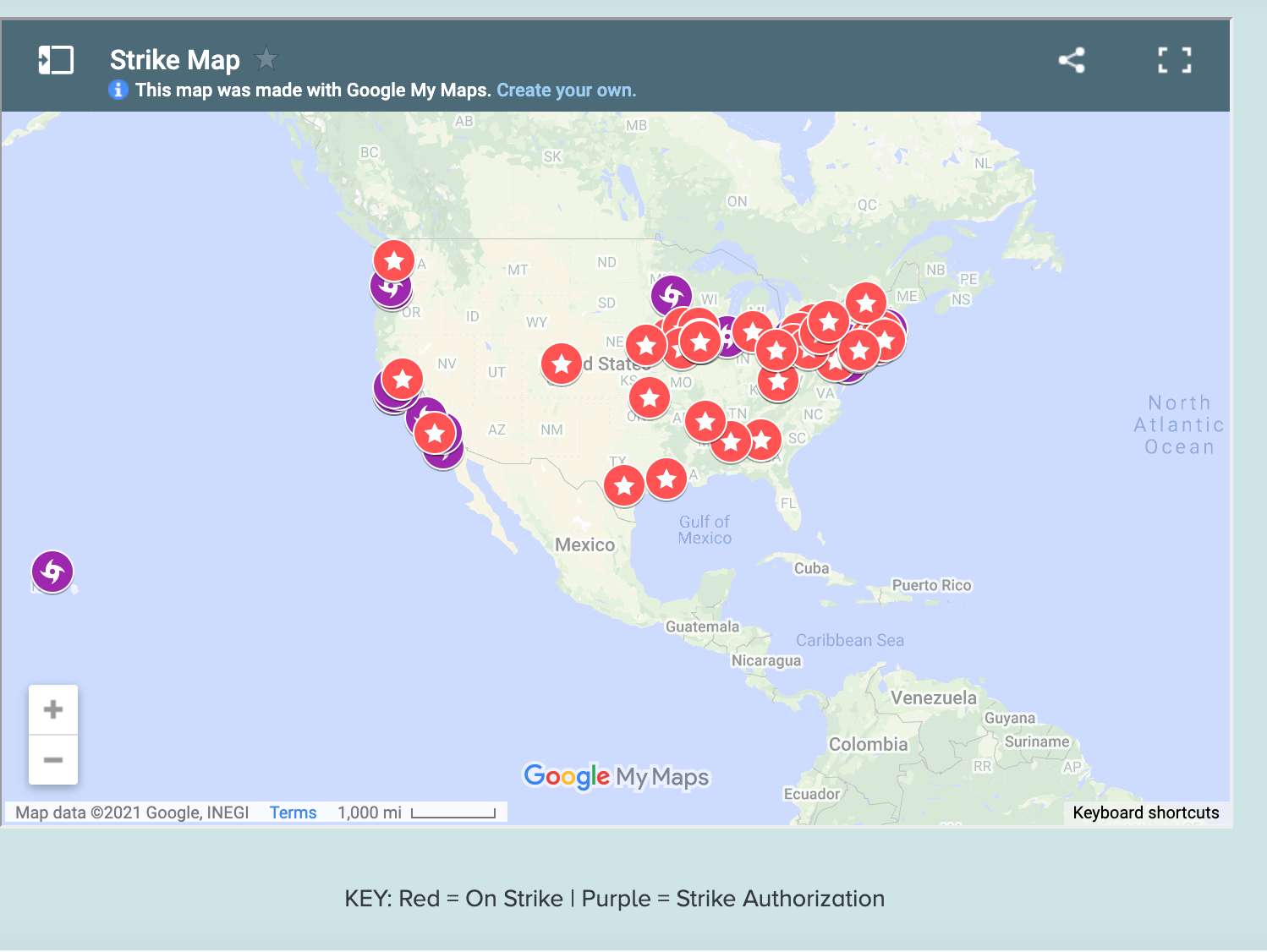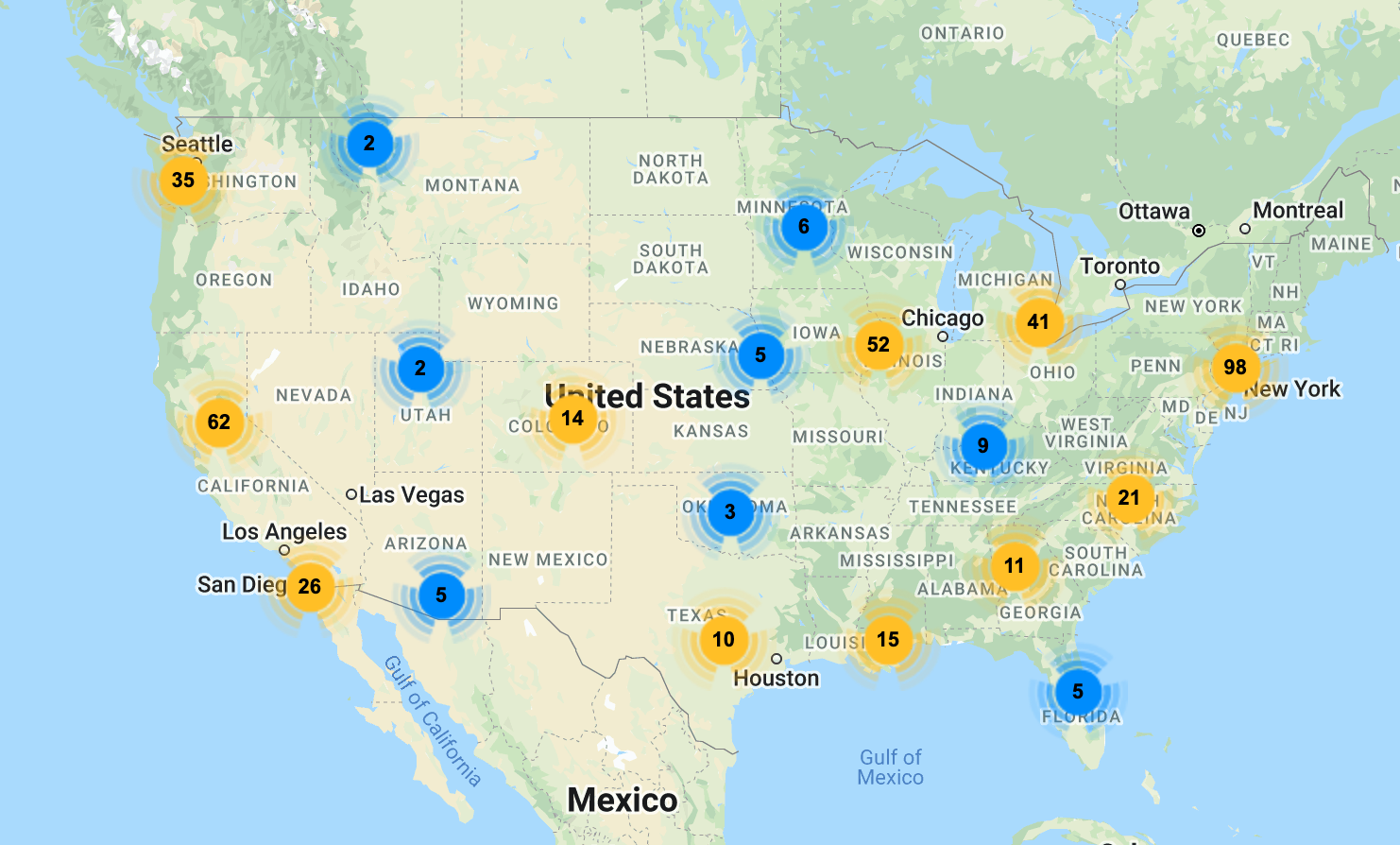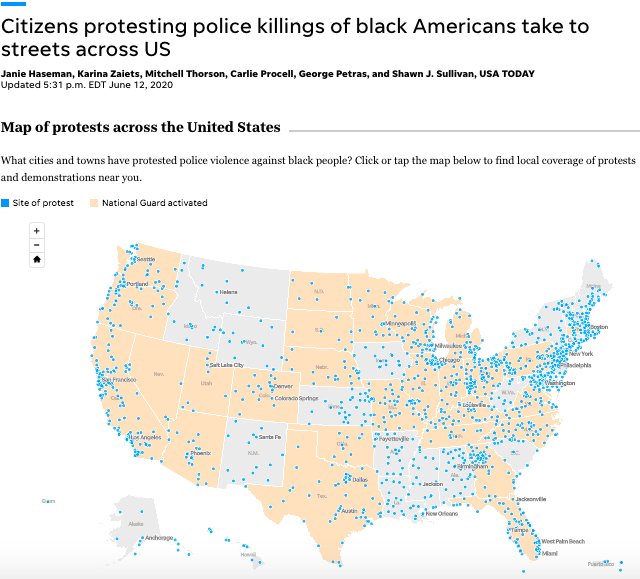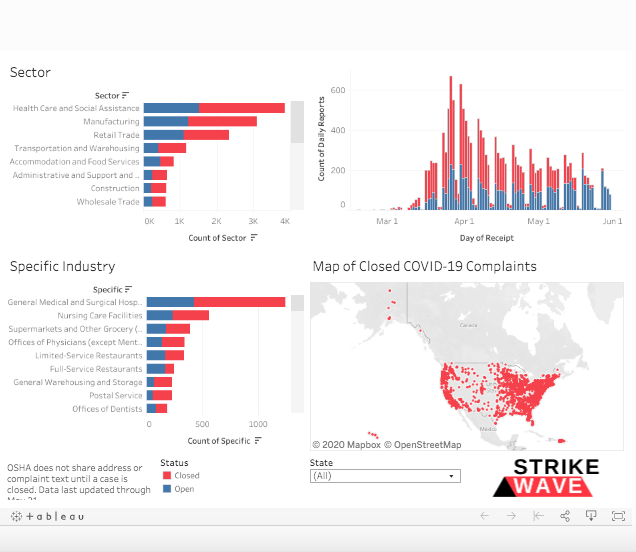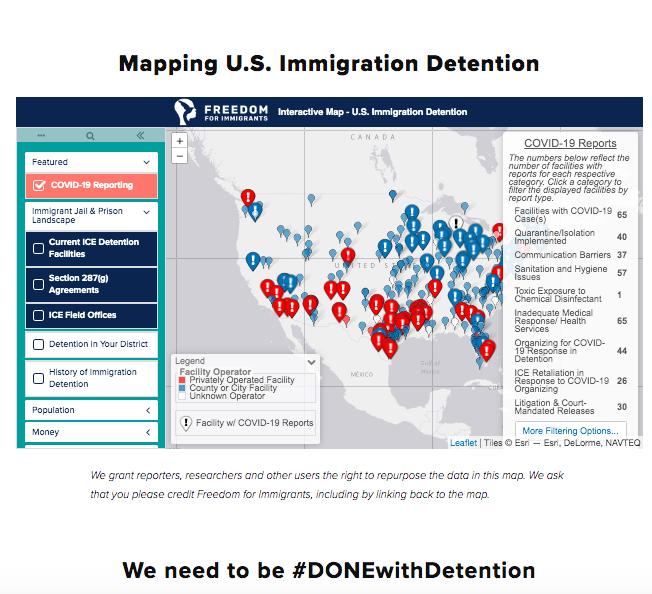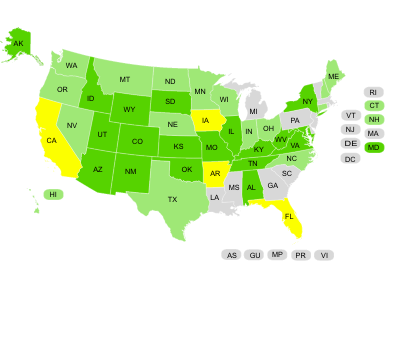Mapping the Movement
The BCG network is excited to share our interactive mapping tool. The tool includes:
- GIS mapping of local union contract expirations across the U.S.
- We have shared the basic map below, and you will also see links to additional maps that color code the contract expiration data by industry sector and international union
- Links to additional maps that serve as examples for how this contract information could be combined with other data for movement work
- Information on how to connect with the network to build out this map and the common good movement
For a list of union acronyms used in this map, click here.
Data Requests
This map is primarily intended for labor unions and community groups considering or engaged in common good work and contract negotiations. The goal is to provide information that will help union and community membership groups see where there are potential opportunities for common good work in different industries and geographies.
For Data Requests Please Complete the BCG Data Request Map Form https://forms.gle/
Background and Methodology
The Bargaining for the Common Good (BCG) approach has identified the period when unions bargain with employers as a key moment for movement work. Building on this strategy, at the beginning of 2020 the BCG network undertook an ambitious project to map contract expiration dates across the entire U.S. in as many industries as possible. The resulting map and the underlying data are an important tool for those interested in building out common good efforts with local unions.
Starting in January 2020 and continuing into the present, we have collected over 9,000 contracts that we estimate cover 5 million workers. The contracts cover a wide range of industries, with a concentration in education, reflecting BCG’s origins in the incredible work of K-12 teachers’ unions. The current version of the map includes contracts that expire starting in 2022 and continue through the end of the decade.The vast majority of the contracts are for 3 to 5 year terms.
For each contract, we sought to collect details beyond the day, month and year of the contract, including the name of the local union(s) and associated national/international union(s), employer(s), number of members covered and type(s) of workers, as well as the city, state, and zip codes relevant for the contract for mapping purposes. Unfortunately, this information was not accessible for all contracts.
Methodology
Sources
We collected contract data from a variety of sources, including local, district and state union staff and elected leadership, union websites, union and community members, government data, news reporting and research, paid and publicly available databases. The frequency of the updates for these sources varied widely. Some rely on government agency data, while others have direct connections to union documents.
Membership numbers
Many of the contracts do not include membership numbers. As you might expect, these numbers change frequently and vary, sometimes widely, over time and are often not readily available.
Location of contracts on the maps
For over three fourths of the contracts, determining where to locate them on a map was clear – that is to say, we had a single city and state, or zip code connected to the contract. However, some contracts cover workers in multiple locations – national, multi-state and/or multi-city. For those contracts, we did our best to research where workers were located and concentrated. When appropriate, we have placed a dot in multiple locations for a single contract, i.e. locating it in a number of cities and/or states. This decision was rooted in the purpose of the map: to reflect where workers can collaborate with each other and community partners to create common good demands. However, some state and national contracts are not included on the map as there is not a single location where workers are concentrated (for example, letter carriers with the USPS are located throughout the country). We maintain information on these contracts on our internal database and can provide information about regional, state, and national contracts on request.
Sharing Updated Information
We recognize you may have more up-to-date and/or detailed information than what we have included on this map for one or multiple contracts. If you would like to share information on a new or an existing contract, please fill out this form.
Acknowledgments
The BCG network would like to recognize and express our deepest gratitude to the many unions, community organizations, and individuals who volunteered their time and assisted in putting together this map and the network’s database of union contracts.
In particular, we’d like to acknowledge the work of the following individuals who were integral in making this tool a reality:
- Sara Myklebust, BCG’s Research Director
- Lily Ryan, BCG’s Organizer
- Hannah Woodford of Georgetown’s Kalmanovitz Initiative and Spencer Shimek of the Center for Innovation in Worker Organization, who spent countless hours helping clean data for the current version of the maps
- Patrick Dixon and Chad Frazier of Georgetown’s Kalmanovitz Initiative, who worked on cleaning data for previous versions of the maps
- Becky Schneider, a GIS consultant based out of Washington, D.C., who volunteered at least a hundred hours to put together the original version of the maps
- Nearly a dozen volunteers from Philadelphia and across the country who donated dozens of hours cleaning data
We cannot thank you enough for your time, dedication and commitment to this work and the common good movement.
This tool helps our movements imagine, understand and actualize opportunities for labor unions and community organizations to connect across geographies and industry sectors around the U.S. to build campaigns for the common good – and create systemic change.
As you review the maps, think about the possibilities.
Imagine community groups and unions creating coordinated common good demands and working together on overlapping campaigns in your city or state.
Think about how this work could spread to every sector of the economy and geography of the country, with hundreds of thousands of people in the streets.
But don’t just think and analyze – act.
- Submit your own contract here.
- Contact the BCG network about building common good work at your local union or community organization.
- Share this tool with others you think might be able to do the same.
Let’s build this movement together!
If you have questions about the methodology, contracts, and/or other details about the maps, email us at bargainingforthecommongood@gmail.com.
More Mapping Tools
We encourage you to check out maps made by partners in our network and others as you craft your own campaigns at the local and national level.
